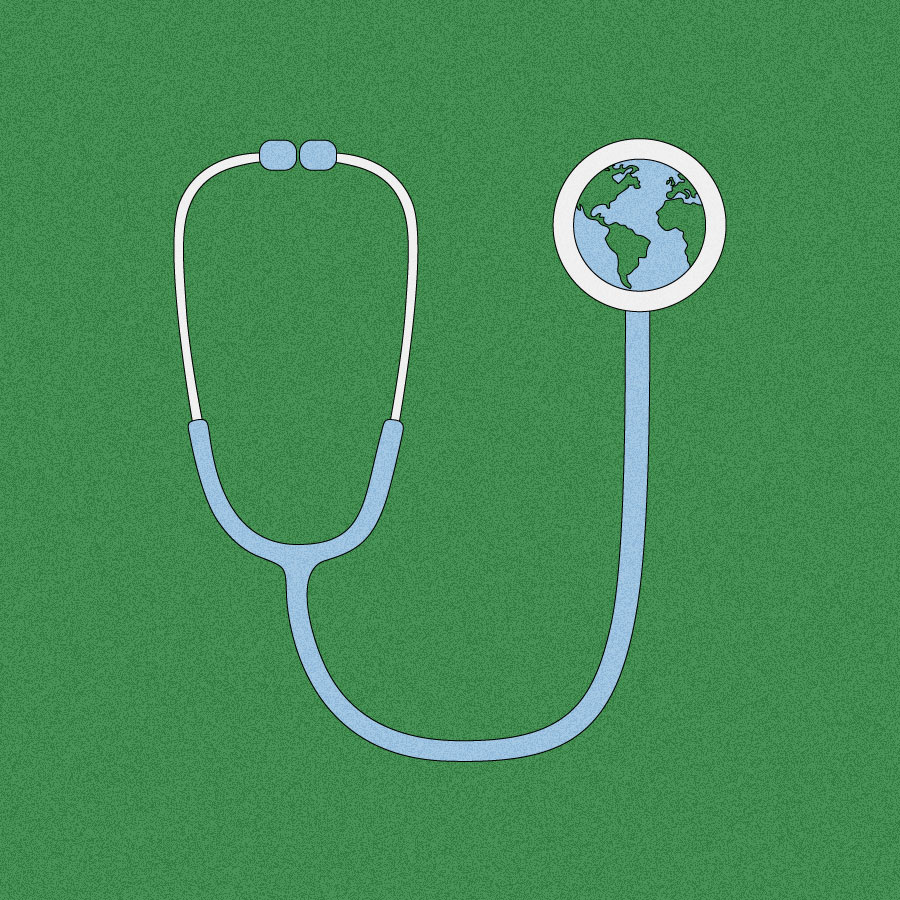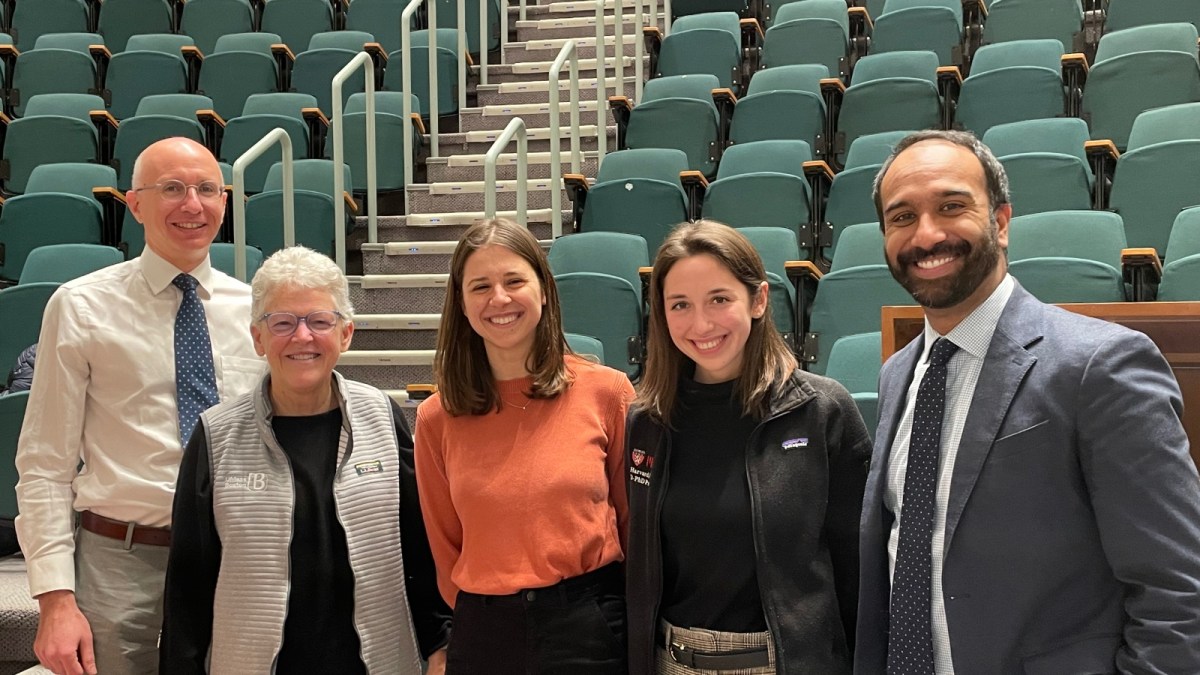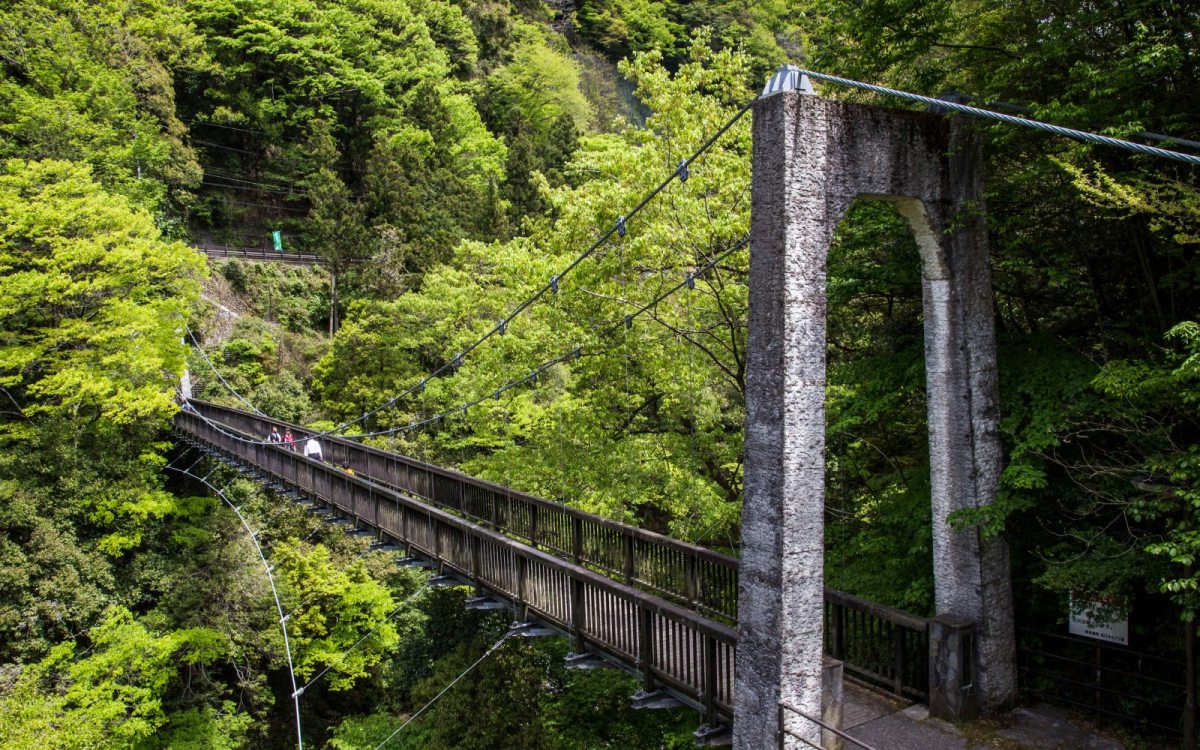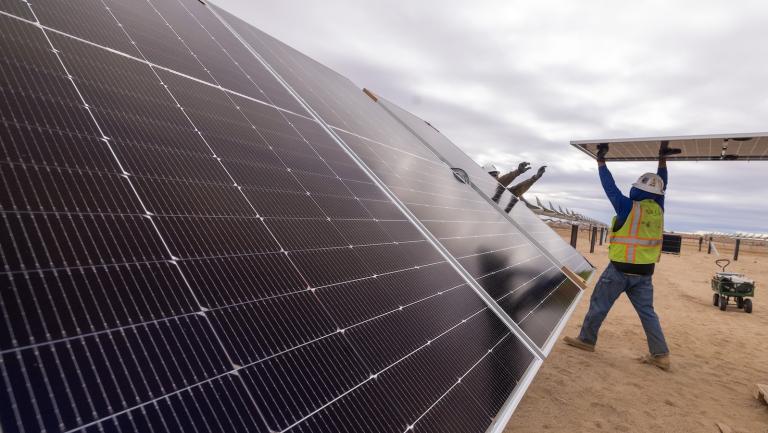
The vision
“What is hard about air pollution and emissions is it’s hard to see. I had times in my life where I didn’t fully understand climate change — I was working on global health or health equity, but I couldn’t connect the dots. I think the power of education is that we can help people see the impacts on what they care about.”
Gaurab Basu, physician and climate advocate
The spotlight
As the climate emergency intensifies, and more communities grapple with its impacts, many schools are being pushed to include climate education in curricula at all levels. And not just in science class. The unjust origins and impacts of this crisis touch all aspects of our lives — advocates want to see it integrated into social sciences, art courses, and beyond. In recent years, climate instruction has risen in a surprising place: medical schools.
Last month, Harvard Medical School (you may have heard of it) voted to approve a climate curriculum theme — meaning that the topic will be woven into all four years of instruction. Harvard isn’t the first institution to do this. It is, however, the top medical school in the country — and the students and faculty behind this move hope it will draw attention and motivate other programs to follow suit.
“In some ways, the medical curriculum is easier because everyone has to take the same things,” says Madeleine Kline, an MD-PhD student at Harvard. “It’s not a class that various interested undergrads can take or not.”
Kline and other students, along with faculty, have been working to embed climate tie-ins into existing courses. So, for instance, when students learn about dialysis — a treatment for kidney failure that requires visiting a hospital or dialysis center multiple times a week — they might also cover interruptions to that care due to more frequent natural disasters. When they cover approaches to diagnosis, they might learn that climate change is making some diseases more common in areas where one wouldn’t previously have expected to see them.
Gaurab Basu, an instructor and primary care physician (and Grist 50 honoree), will serve as the new theme director. We caught up with Kline and Basu to talk about the curriculum they’ve been developing and how they see the field of medicine shifting to respond to the climate crisis. Their responses have been edited for length and clarity.
![]()
Q. Can you tell me a bit more about the curriculum, and what makes Harvard’s approach unique?
Basu: We have five focus areas that organize our curriculum. Focus one is to define the pathophysiological mechanism by which climate change, air pollution, and ecological degradation impact human health. Number two is to apply that knowledge to the clinical care of patients, including prevention, diagnosis, and risk-reduction counseling.
Number three is to analyze historical and structural causes of climate change and the ways in which it creates and exacerbates health inequities. Number four is to describe the ways in which the healthcare system contributes to climate change, and how healthcare delivery is vulnerable to climate-related events. And number five is to explore the role of physicians and healthcare in climate solutions.
Whenever we’re creating curriculum, we’re thinking, “Is it speaking to these priority areas for us?”
Q. I can think of a few obvious ways climate change impacts human health. What are some of the more interesting or surprising overlaps you’re covering in your curriculum?
Kline: The most obvious, I think, is extreme heat — something that maybe we are more tangibly aware of. Severe weather is another one, [and] air pollution. One that I’m particularly interested in, and that we’ve worked on an integration for already, is changes in vector ecology. So, the mosquitoes or ticks that carry illnesses that make people sick, how they’re impacted by changes in ecology. The range of different mosquitoes and ticks changes, and who they infect and how they do that changes.
Other things that maybe are a little bit less intuitive are changes in allergy season, water quality, the kinds of infections that spread when you have a lot of flooding or when you have sea-level rise. Environmental degradation and biodiversity losses also have huge impacts, more on a population scale — [things like] forced migration, conflict between people, and the mental health impacts. All of those things are intertwined. Some of them I think you could pretty clearly arrive at, and some of them people are usually a little bit more surprised about.
Q. Are there other institutions you looked to for examples when you were beginning to organize this?
Kline: There are networks of medical students across the country, in particular Medical Students for a Sustainable Future, that has a whole curriculum arm. Lots of independent medical schools are also trying to do their own curricular integrations. And then there are resources under development with the hope that they’ll be universally applicable — so things like Climate Health Ed, which is a collaboration between Columbia, some of the Boston hospitals, UCSF, [and Emory] to try and make these resources that people can use to integrate into their curriculums longitudinally. All of those have been models for us.
And there’s definitely a push at Harvard beyond medicine as well. [Last year], Harvard University established the Salata Institute. One of their emphases is going to be on education. So throughout all of the different professional schools and the undergraduate [program], they’re looking to make [climate] curricula that align with the goals of those individual schools.
Q. Have you faced any pushback or challenges in implementing this curriculum theme?
Kline: The challenge is a curriculum that’s already so packed. There’s a lot of basic science and medicine that people need to learn in the preclinical curriculum, and then there are a lot of other social issues that there’s increasing pressure to learn about. Figuring out how to integrate a climate lens without adding excess stress on the curriculum is definitely the challenge and is where we have to be most strategic.
But I think we are lucky — we don’t have to convince anyone that climate change is real. And we don’t really even have to convince anyone that this is something medical students should be learning about. We surveyed medical students, and the response was pretty overwhelming that students wanted to learn about this. I think faculty all feel that it’s important. So we haven’t gotten resistance there, whereas I think other medical schools really might face that.

Former White House National Climate Advisor Gina McCarthy joined a discussion session with first-year medical students at Harvard last month. Basu and Kline are pictured on the right and second from the right. Courtesy of Harvard Medical School
Q. Can you tell me more about the focus area that addresses how healthcare systems contribute to the climate crisis? What are some key learnings there?
Kline: What we’ve seen that students are really interested in learning more about is the contribution of the healthcare system in terms of emissions and waste. I think the healthcare system is responsible for like 8.5 percent of national carbon emissions. It’s a really shocking statistic. That we contribute that much to emissions, which we know hurt people’s health, is such a contrast to me. It’s just so not right.
There’s a lot that we can do as physician advocates in terms of migrating to clean energy and also reduction of waste in hospital systems. And I think a lot of people are interested in learning about those different buckets.
Basu: If we can’t look around and see the waste, if we can’t see the ways in which we are causing unnecessary emissions and being mindless about [something like] anesthetics, for example — anesthesias are a major part of our carbon footprint — if we’re just leaving the anesthetics on when patients are not even in the room, if we’re choosing anesthetics that are orders of magnitude higher emissions and have no clinical benefit, that’s mindless harm to our planet and harm to our patients.
Being able to see empowers us to find our place in this work and think about how we can contribute to positive change.
Q. That’s so interesting. What are some ways you see these learnings impacting approaches to clinical care?
Basu: [We want to encourage] a practice of saying, “Hey, we need to keep scrutinizing public health data. We need to keep scrutinizing these patterns of how climate change is changing the environment in which our patients live.” It’s an active, dynamic process of becoming an effective doctor in a changing planet.
Here in Boston, the thing I think most about is the changing heat. We’ve got to think about increased risk of heart attacks and stroke, and associations with poor obstetrical outcomes and mental health.
We think a lot in Boston about snow days and making sure everyone’s safe on a snow day. On a dangerously hot day, I think we should be calling prenatal patients and saying, ‘Don’t come in today.’ A lot of my patients at my community health center are taking multiple buses, staying outside for a long time. We should be screening in those ways.
I think everyone can play a role in drawing the connections between climate change, air pollution and health. When we all start making these connections, and start speaking up that it’s unacceptable that our loved ones are getting sick because of these impacts, it’ll really change the paradigm of what is possible for climate solutions.
Q. What does it mean to you both to want to care for people as doctors, and as climate advocates?
Kline: I think healthcare is just a fundamental human right for everyone. And the greatest threat to that right now is the changing climate — and it intersects with every other threat to human health, and it doesn’t impact people proportionally.
The narratives of people who are impacted are such a powerful motivator for change. That’s what drew me to the intersection.
Basu: I came into medicine because there was something really profound about taking care of people’s health. Seeing their humanity — there was something very raw about that. Ultimately, what I want is a world in which we are taking care of one another. The breakthrough for me was realizing that we have to take care of our planet so that we can take care of people.
There’s a bigness to this, there’s an interconnectedness to it, it can feel complex or overwhelming, but I think health gives us a vehicle to stay anchored. There’s a clarity of purpose with health — that we want to take care of people, that we see the human faces that are impacted by this, and we feel morally challenged to ensure that we are taking care of our patients. It’s part of our oath.
— Claire Elise Thompson
More exposure
- Read: about how global heating affects our sleep (Grist)
- Read: Generation Dread by Britt Wray, a book about climate anxiety and how to cope with it (you can also subscribe to the Gen Dread newsletter here)
- Explore: the October 2022 issue of the American Medical Association’s Journal of Ethics, which examines waste and emissions in the U.S. medical system
- Watch: a short video about the intersection of environmental degradation and pandemics (Grist)
See for yourself
Last week, we asked y’all about your relationship to travel on a changing planet. Here’s what we heard:
42 percent of folks who answered the poll are already flying less, or not at all, because of climate concern.
27 percent of you haven’t taken that step — but you would if options like airships became more available.
26 percent of you have chosen not to fly at least a few times.
And 3 percent of you aren’t planning on changing your travel habits.
We so appreciate hearing where you all are at in your individual climate journeys. We’d love to hear your thoughts on this week’s topic as well — has your health or well-being been affected by climate impacts? Are you taking preventative measures to stay safe from air pollution, extreme heat, natural disasters? Reply to this email to tell us about it.
A parting shot
While climate change threatens our well-being in a million ways, healthy nature offers the opposite. Spending time outdoors, or even looking at pictures of green things, has been shown to reduce stress, lower heart rates, and improve anxiety and depression. The practice even has a name: forest bathing, or shinrin-yoku in Japan, where the term was coined. This photo shows a popular hiking trail known as In Touch with the Forest Fureai Shinrinyoku, in Okutama, Tokyo.




